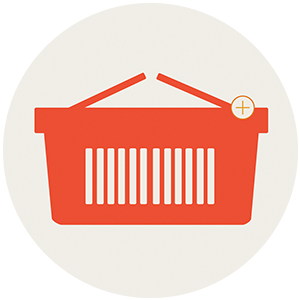Having an online presence is crucial for businesses looking to reach a wider audience and increase sales. One of the most popular ways to do this is by creating an e-store. However, many aspiring eStore owners share common misconceptions about starting an eStore. In general, these come from sales pitches from software companies and people trying to sell courses. Their goal is more about selling their tools or services than actually helping you successfully launch and eStore.
Why?
It’s a tough business. Online shopping is an extremely cluttered and competitive space. So, you’ll need a strong plan and lots of determination to succeed.
Myth 1: Launch your eStore for Free and Start Making Easy Money
From website platforms to social media influencers, we’re bombarded with the message that eStores are easy to start and run. While some of the tools are more user-friendly than in the past, eStores are not the fast track to easy wealth. They can be just as difficult and time-consuming to build and run as a brick-and-mortar business.
Here are some key steps to help you launch your e-store and start selling online.
- Define Your Niche and Target Audience: Before diving into the process of setting up your e-store, it’s crucial to define your niche market and target audience. Conduct market research to identify gaps in the market and understand the needs and preferences of your potential customers. This will help you tailor your products and marketing efforts to attract the right audience.
- Choose the Right E-Commerce Platform: Selecting the right e-commerce platform is essential for the success of your online store. Consider factors such as ease of use, customization options, payment gateways, and scalability when choosing a platform. Popular e-commerce platforms like Shopify, WooCommerce, and BigCommerce offer a range of features to help you create a professional and user-friendly online store.
- Design Your E-Store and Add Products: Once you’ve chosen your e-commerce platform, it’s time to design your online store and add your products. Create a visually appealing website that reflects your brand identity and makes it easy for customers to navigate and make purchases. Ensure that your product descriptions are detailed and include high-quality images to showcase your products effectively.
- Set Up Payment Gateways and Shipping Options: To start selling online, you’ll need to set up secure payment gateways to accept payments from your customers. Choose reliable payment processors like PayPal, Stripe, or Square to ensure seamless transactions. Additionally, set up shipping options and rates based on your products’ size, weight, and destination to provide accurate shipping costs to your customers.
- Market Your E-Store: Once your e-store is up and running, it’s time to drive traffic and generate sales. Implement digital marketing strategies such as search engine optimization (SEO), social media marketing, email marketing, and influencer partnerships to promote your products and reach a wider audience. Monitor your e-store’s performance using analytics tools and make adjustments to optimize your online store for success.
Often, people start eStores with the mindset “If you build it, they will come.” But websites don’t get traffic from simply existing. You have to push traffic to them before you get any sales.
Myth 2: You only need a social media account and sales will roll in.
In the past, social media was a low-cost way to get noticed. Now, the platforms have matured — with professional account dominating the landscape both organically and through paid promotions. If you want to be competitive on any social media platform, you’ll need to invest significant time and money.
Starting a new social media account can be both exciting and daunting. Whether you’re a business trying to reach a new audience or an individual looking to grow your personal brand, establishing a successful presence on social media requires strategy and dedication. Here are five essential tips to help you succeed on your new social media account.
- Define Your Goals: Before diving into creating content, take the time to define your goals. Are you looking to increase brand awareness, drive traffic to your website, or boost sales? Understanding your objectives will help guide your content strategy and measure your success.
- Know Your Audience: To effectively engage with your followers, you need to understand who they are. Take the time to research your target audience’s demographics, interests, and online behavior. Tailor your content to resonate with them and encourage interaction.
- Create Consistent and Quality Content: Consistency is key on social media. Develop a content calendar to plan out your posts and ensure a steady stream of content. Focus on creating high-quality and visually appealing posts that reflect your brand’s identity.
- Engage with Your Followers: Building a community around your social media account requires active engagement. Respond to comments, messages, and mentions promptly. Show appreciation for your followers by liking and commenting on their posts as well.
- Analyze and Adapt: Regularly monitor your account’s performance using analytics tools provided by the platform. Pay attention to metrics such as reach, engagement, and follower growth. Use this data to identify what’s working and what’s not, and adjust your strategy accordingly.
By following these tips and staying committed to growing your new social media account, you’ll be on your way to building a strong and successful online presence. Remember, success on social media takes time and effort, so stay patient and persistent in your efforts.
Myth 3: People will find my website as soon as it launches
Driving traffic to a new website can be a challenging task, but with the right strategies in place, you can attract visitors and grow your online presence. Here are some effective techniques to drive traffic to your new website:
- Search Engine Optimization (SEO): Optimizing your website for search engines is crucial for increasing organic traffic. Focus on using relevant keywords, creating high-quality content, and improving your website’s loading speed to enhance your search engine rankings.
- Social Media Marketing: Leverage the power of social media platforms to promote your website. Create engaging posts, run targeted ads, and interact with your audience to drive traffic from platforms like Facebook, Instagram, Twitter, and LinkedIn.
- Content Marketing: Develop a content strategy that resonates with your target audience. Create valuable and shareable content such as blog posts, videos, infographics, and podcasts to attract visitors and establish your brand as an authority in your industry.
- Email Marketing: Build an email list and send out regular newsletters to drive traffic to your website. Offer exclusive promotions, updates, and valuable content to incentivize subscribers to visit your site.
- Collaborate with Influencers: Partner with influencers or industry experts in your niche to reach a wider audience. Influencers can help promote your website to their followers and drive targeted traffic to your site.
By implementing these strategies and staying consistent with your efforts, you can effectively drive traffic to your new website and increase your online visibility. Remember, building a strong online presence takes time and effort, so be patient and keep experimenting with different techniques to find what works best for your website.
Myth 4: Running an online store has no overhead
Running an online store can be an exciting venture, but it’s crucial to be aware of the various expenses involved to ensure the success and sustainability of your business. One of the most significant expenses to consider is the cost of setting up your online store, which includes purchasing a domain name, web hosting, and potentially hiring a web developer to create a professional and user-friendly website. Additionally, investing in an e-commerce platform or software to manage your online store efficiently is essential.
Marketing and advertising expenses are another crucial aspect of running an online store. To attract customers and drive sales, you’ll need to invest in digital marketing strategies such as social media advertising, search engine optimization (SEO), and pay-per-click (PPC) advertising. These expenses are necessary to increase your online visibility and reach your target audience effectively. Moreover, don’t forget about operational expenses like inventory management, shipping costs, customer service, and payment processing fees, which are essential for the smooth functioning of your online store.
In conclusion, while running an online store offers endless opportunities for growth and success, it’s essential to be aware of the common expenses associated with it. By carefully planning and budgeting for expenses such as website development, marketing, and operational costs, you can set your online store up for success and ensure its long-term viability in the competitive e-commerce landscape. Remember, understanding and managing these expenses effectively is key to achieving your business goals and maximizing profitability.
Myth 5: A specific theme, platform or CMS is the key to online sales
Choosing the right website platform is a crucial decision when it comes to establishing your online presence. With a plethora of options available, it can be overwhelming to determine which platform best suits your needs. To make the selection process easier, consider the following factors.
Firstly, define your website’s purpose and goals. Are you creating a blog, an e-commerce site, a portfolio, or a corporate website? Different platforms cater to specific needs, so understanding your objectives will help narrow down your choices. Next, assess your technical skills. Some platforms like WordPress offer greater flexibility but require more technical know-how, while others like Wix provide a user-friendly interface for beginners. Additionally, consider your budget. While some platforms are free, others may require monthly subscriptions or fees for additional features.
Furthermore, think about scalability and customization. Ensure the platform allows room for growth as your website expands. Look for features like responsive design, SEO capabilities, and integration with third-party tools. Consider the platform’s community support and available resources. Forums, tutorials, and customer support can be invaluable when you encounter challenges. By evaluating these criteria, you can make an informed decision and select a website platform that aligns with your goals and abilities.
How to Launch a Successful eStore
Whether you’re a small business owner or an aspiring entrepreneur, setting up a successful e-store can be a game-changer for your brand. Here are some tips to help you create a thriving online store:
- Choose the right platform: Selecting the right e-commerce platform is the first step in creating a successful e-store. Consider factors such as ease of use, customization options, payment gateways, and scalability when choosing a platform that aligns with your business needs. Don’t just go with what you’ve heard from other people. Pick the one that’s right for you.
- Design a user-friendly website: Your e-store’s design plays a significant role in attracting and retaining customers. Ensure your website is visually appealing, easy to navigate, and mobile-responsive to provide a seamless shopping experience for users. If you’re not sure, test it out on your family and friends. They can often highlight areas that are difficult and confusing.
- Focus on product presentation: High-quality product images, detailed descriptions, customer reviews, and clear pricing are essential for converting visitors into customers. Invest time in creating compelling product pages that highlight the benefits of your products and build trust with potential buyers. If needed, hire a product photographer. It’s worth every penny because you’ll use the images for a long time.
By following these tips and staying updated on e-commerce trends, you can create a successful e-store that drives traffic, engages customers, and boosts your online sales. Remember, building a successful e-store takes time and effort, so stay patient and persistent in your efforts to grow your online business.
Understand Shopping Trends
We’re dropping our next newsletter in July 2025. Sign up for exclusive freebies, giveaways, and industry insights.


